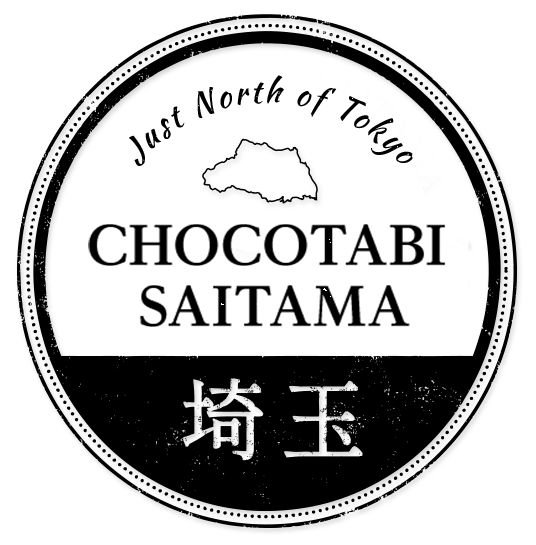Let’s experience the traditional cultures cultivated in Saitama Prefecture.
Today, the mere mention of traditional culture might usually conjure images of colorful outfits that cannot be easily worn outside of quaint festivals without drawing unwanted attention or dances and rituals that seem more suited to programming on National Geographic than found in contemporary homes. But traditions and culture are best understood as things that still provide a strong sense of respect and love for community, that have stood the test of time, and remain relevant.
Much of what is portrayed as the traditional culture of Japan seem to be of the National Geographic variety. Inscrutable formalities are thought of as vital to its traditions, but Japanese culture has always revolved around crafts and tools, the things that communities needed over time. Many crafts and artisanship developed during the Edo Period (1603-1868), mostly because the strict social order, relative economic prosperity, stable population, and consolidated power under the Tokugawa shogunate afforded many people the time and luxury of enjoying cultural pursuits.
This is in stark contrast to the previous major period of Japanese history, the Sengoku (1467-1615), commonly referred to as the Age of Warring States. Civil war, social upheaval, and conspiratorial political affairs were common. Travel, of course, was dangerous, not only for the wealthy elites, but for commoners, too.
The major thoroughfares throughout Japan, particularly the five routes of Nakasendo, Tokaido, Koshu Kaido, Oshu Kaido, and Nikko Kaido, linked Kyoto with Edo and Edo to important locations in modern-day Yamanashi, Tochigi, and Tohoku. Many of these roads passed through modern-day Saitama. As such Saitama was well-positioned to be a focus of trade in traditional arts and culture. Its many great temples and shrines, as well as architecture, attest to its important place as a crossroads for Edo travelers.
・Ukiyoe of Okegawa
One of the traditional arts that has survived centuries is ukiyoe, the woodblock prints that thrived in the Edo Period. Some of the masters that are still revered today are Kitagawa Utamaro, Toshusai Utamaro, Utagawa Hiroshige, and the greatest ukiyoe master, Katsushika Hokusai. The works of these artists remain popular today, but what is peculiar is that ukiyoe were a popular medium back then. The artists who cut the woodblocks themselves were funded by patrons, but the prints of landscapes, brothels, and the people of the time became fashionable.
Okegawa is one of the old stops on the Nakasendo, largely overlooked today. Some of the old storehouses have been restored, but one must look carefully to see the former splendor. But here, inside the tourist office on the old main street, you can make a simple postcard with a 3-step ukiyoe experience. While the masters made as many as a dozen (or more) blocks to show intricate details in their art, even a 3-step process will give you a taste for ukiyoe. Furthermore, Okegawa has leapfrogged to a contemporary equivalent to ukiyoe. The town distributes a collector’s card adorned with the artwork from its original manhole cover.
・Tategu Kaikan
The town of Tokigawa, is located in a hilly area near Chichibu. Here, the town boasts a store known as the Tategu Kaikan. Tategu is a wood craft, that is a kind of joinery used to construct doors ,and especially sliding doors in Japanese architecture. Here, around 100 companies and guilds showcase their products in a store, cafe, showroom, and community center. The area’s many craftsmen didn’t start out making doors and furniture, though. The area became an attractive place for many wood craft masters to work because of the building of a mountain temple, Jiko-ji, which dates back to the Nara Period (710-794). But the temple’s heyday was during the Edo Period, when the construction of new buildings appropriate to the temple’s stature lured many master craftsmen to Tokigawa. The temple, along with some very tasty local soba noodles, still provides the lure that draws most tourists here. But a visit to the Tategu Kaikan is certain to enlighten you to the wonders of Japanese woodcraft.
・Washi workshop
Washi, traditional Japanese paper, has become a popular souvenir for many tourists and fans of good stationeries. But making washi paper is so unique that it is now recognized as a UNESCO Intangible Cultural Heritage asset. In Ogawa, the “michi-no-eki” tourist center, is home to a small museum celebrating Saitama Prefecture’s traditional crafts and washi workshop. In the washi workshop, you can make a variety of paper products, including some that can become a handy souvenir. Your choices include a lighter traditional paper and a heavier sheet, that can be divided into, for example, a series of 8 postcards. After making the basic paper, you decorate it, using colored pieces of paper, leaves, and flower petals. After completing your design, the staff dry it, and mail it to where you are staying (in Japan only). The activity not only is a great way to make a gorgeous memento of Japan, but provide a glimpse to an ages-old craft, that still flourishes today.
















